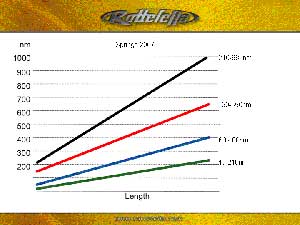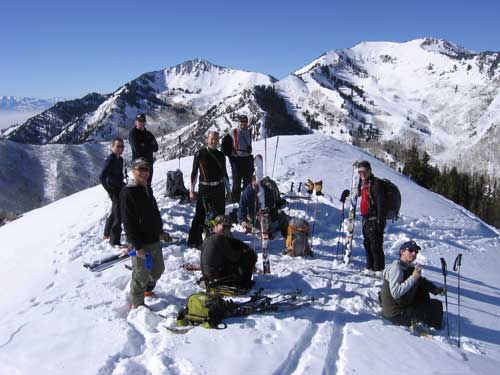Beta Version Review
Reprinted from Couloir Vol. XIX-5, March 2007
by Craig Dostie
The long awaited NTN (New Telemark Norm) binding from Rottefella has arrived. And how! Is it the Holy Grail of telemark bindings? If Holy means perfect, then no. But if it means you will feel more righteous while genuflecting through your tele dance, it certainly delivers a holier than thou tele turn, especially when it comes to holding an edge on the bane of telemark—dicy, icy snow.

Product Manager for K2 Telemark, Mike Hattrup, says, “it has more edge control than any alpine [touring] binding out there.” If you thought tele only ruled in the realm of soft snow, NTN changes all that.
The first thing you notice with NTN isn’t edging power, but rather, how easy it is to get in to the binding. Say goodbye to bending over to snap a heel lever on to your teleboot. To latch your boot into NTN, put your boot toe into the metal toe plate. Then, before you push the frontmost (there are two) lever, stand flat and make sure your heel is aligned in the center of the ski. If it is, then push the lever down with the grip of your ski pole. As the lever goes down, it pulls the rear clamp of the binding on to the second heel of the boot (in front of the heel).
The second thing you’ll notice is how smooth the flex is. NTN is the first boot/binding system where the boot and binding manufacturers worked together to achieve a smooth telemark flex. There were lots of subtle but important changes made by Crisp and Scarpa to achieve this. For instance, Crispi changed the orientation of the carbon fibers in the lower boot to soften the longitudinal flex, but maintain torsional stiffness. Scarpa softened the overall flex of the lower boot by thinning the overlap cuff where it butts up to the back of the bellows, but widened the sole under the bellows, again, to improve torsional stiffness.
 From the binding side, a pair of indexed compression spring cartridges are located underneath a plastic plate between the tip of the toe and the second heel. These spring cartridges come in four stiffnesses; soft, medium, hard, and extra hard. Even with the softest cartridges, edge control was still as good as the most active 75mm norm bindings, or better. With the medium cartridges there was a noticeable difference, but it wasn’t dramatic. One of my fears, that NTN would cause tip dive in soft snow, was not evident at all. Even more important, rocker launch is completely eliminated with NTN. However, there were reports of toe pinch, so beware if you are serious about upgrading.
From the binding side, a pair of indexed compression spring cartridges are located underneath a plastic plate between the tip of the toe and the second heel. These spring cartridges come in four stiffnesses; soft, medium, hard, and extra hard. Even with the softest cartridges, edge control was still as good as the most active 75mm norm bindings, or better. With the medium cartridges there was a noticeable difference, but it wasn’t dramatic. One of my fears, that NTN would cause tip dive in soft snow, was not evident at all. Even more important, rocker launch is completely eliminated with NTN. However, there were reports of toe pinch, so beware if you are serious about upgrading.
The mounting base plate uses the standard 4-hole Targa pattern for attaching to the ski. The binding can slide along the mounting plate, allowing quick fore/aft adjustment in 10mm increments for fine tuning the binding position.
One of the other expectations for the Tele Grail is releaseability. For the moment, Rottefella is not pushing the release capability of their binding since it is not DIN or TUV certified. Nonetheless, the wings on the outer edges at the back of the binding will allow a level of release that, Rottefella claims, is equivalent to their TRP release plate. For me, it performed superbly, meaning it never released, as it never should have in the runs I took it on. On a side note, I believe it would be possible to rig this binding to perform an avalanche release by yanking the front lever up via an attached cord. I don’t think this was a premeditated feature, but an option worth considering for do-it-yourselfers.
Are there any weaknesses to Rottefella’s NTN binding? Yes, but unless you’re a die hard backcountry turn earner that spends more than 60% of your time avoiding chairlifts, the limitations are all related to the touring function and quite acceptable for day trips and short side-country forays. If you’re headed for a week long hut trip in British Columbia, a lighter touring binding with a greater range of motion would be a better choice.
To switch to touring mode, there is a second lever in front of the binding, nested inside the main lever that clamps the binding to your boot. Lift this lever with your hand, or use the handle of your ski pole to lift it on the side of the binding. Again, it’s nice to be able to switch modes without bending over.
When you lift this lever, a pair of teeth on the outer side of the binding, under the front of the toe pulls out of the way, allowing the entire binding plate to pivot. The pivot is located about 4mm behind the traditional pin line, giving a natural, efficient stride. It is worth noting that the pivoting motion is not frictionless. There is a very small amount of resistance to flexing the binding plate in touring mode, but you’ll only notice this if you feel it by hand. It feels frictionless through your foot. This minute resistance actually makes sidestepping on a traverse more natural since your ski tails will not drop away.
So far, so good. The range of motion, unfortunately, is limited to 40 degrees. During normal skinning on a moderately pitched trail (up to 20 degrees) this is plenty of motion. I was even able to do snap kick turns on slopes as steep as 30 degrees. Any steeper than this and you would want more range of motion, especially if the snow were deep. The real problem, however, is the propensity for snow to build up underneath the touring lever and front portion of the toe. The walls of the binding act as walls to trap snow. With each step, the snow gets packed under the toe, eventually packing into ice and reducing the range of motion to a mere 20 degrees. At that point, your stride is reduced, and worse, when you want to lock out the pivot at the top of your climb, there could be enough ice packed in there to prevent changing modes until you can chip the ice out of that cavity with a screwdriver or similar tool. I trust Rottefella will address these concerns before delivering the final product next fall although they are quick to point out their primary focus is for unparalleled telemark power, with touring performance as secondary.
To summarize, NTN is best suited for an aggressive skier who demands the best downhill performance available with the freedom to nab fresh tracks out of bounds, whether that be slackcountry or backcountry.
The real question isn’t does it deliver improved performance? The question is, does it deliver enough to be worth upgrading both boots and bindings?
Another reason is to simply provide an archive for the mass of information and ideas first published by yours truly in the pages of Couloir. I’m not okay with those being relegated to the trash bin of print history. The web offers the perfect solution for accessing those old articles.


3 pings
[…] This post was mentioned on Twitter by Peter Taylor, Peter Taylor. Peter Taylor said: Craig Dostie has reprinted his Rottefella NTN review. EarnYourTurns » Blog Archive » Rottefella’s NTN Binding https://bit.ly/bcpiTN […]
[…] relevant posts: Rottefella’s NTN arrives…FINALLY! – Beta version, reprinted from Couloir Vol. XIV-5, March 2007 […]
[…] first impression of the NTN system was surprisingly positive. Those first turns may have been wrong, so to speak, […]